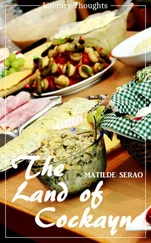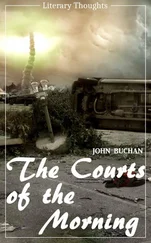When the Gurkhas were told that they were wanted to fight in the great war they asked, "Shall we all be killed?"; and the officer said, "Not all." They inquired, "Shall a great many be killed?" He replied, "Possibly." Then they asked, "Will a hundred come back?" "Perhaps so." "That will be enough," they said; "our people will know that we have fought well."
The Gurkha's skill with his kukri is so remarkable as to appear absolutely unerring. Given a human mark—let us say in the shape of a German—he can take off his nose or ear, or pierce his eye with deadly precision. No knife-thrower in the world can so accurately and closely fence in a man standing against a wall as can a Gurkha with some twenty knives—without drawing a drop of blood. A soldier writing from the front concludes his mention of these terrible little men with the passage: "God help the Germans these men come across, for nobody else can. Death to them is a pastime." Yet, though the art of throwing the kukri is perfection itself among the Gurkhas, it must not be supposed that they make a practice of throwing it at the enemy. They would not run the risk of losing the beloved weapon for the sake of killing one German.
The well-known fighting races inhabiting the Punjab, such as the Sikhs and Pathans, are supplemented by a considerable number of smaller fighting castes. All these are either of Rajput, Jat, or Tartar descent; but, being mostly Mahomedans, they are prone to claim Moghul or Arab origin. Though not very distinct from some of the more unwarlike Punjab castes, they have, at some period of their history, displayed enough valour to acquire the ascendancy over neighbouring districts, and the memory of this has given them that pride of blood and race and that spirit of self-reliance which so largely constitute the martial instinct. The smaller Mahomedan fighting tribes of the Punjab are often grouped together under the generic term "Punjabi Mahomedan."
The most important, from a military point of view, are the Ghakkars, who make excellent soldiers. They are fine men, fierce, proud, and high-spirited.
Awans and Sials.—These were at first soldiers, and latterly agriculturists. During the Mutiny the Sial chief remained loyal, and rendered active assistance by raising a small body of cavalry from his tribe for Imperial use.
The Kharrals are also a well-built, hardy tribe, possessing the martial instinct in a high degree. The Bhattis and the Khokars are also among the warriors of India.
[Note.—The warriors of India have a score to settle with the Germans. It is a private matter not to be mentioned in the same breath with the whole- hearted loyalty of the Indian troops, but at the same time it will lend a keener edge to every kukri, a more formidable point to every lance and bayonet, a more deadly aim to every bullet. What rankles justly in the Indian's breast in this. During the Boxer Insurrection of 1900 the Germans treated the brave Indian troops fighting by their side as if they had been the dirt of the earth. Our noble Indians, whose traditions were clothed in glory long before the Germans knew proper clothing of any kind, have not forgotten this. For fourteen years they, too, have been looking forward to "the day." And now it has come. "For the Padisha and the Right!"—if one could read their thoughts —"and, incidentally, a squaring of accounts!"]
A GENERAL DESCRIPTION OF THE INDIAN ARMY
Commands.—A Command is one of the principal administrative portions into which the Army of India is divided. There are four such Commands—the Punjab, Bengal, Madras, and Bombay. Each Command is presided over by a Lieut.-General, and is further divided into first and second class districts, commanded by Major-Generals and Brigadier-Generals respectively. The principal executive authority is vested in the Commander-in-Chief in India, subject to the control of the Governor-General, who is, by law, the supreme head of the Army.
Native Cavalry.—A regiment of native cavalry, with the exception of the Guides and the Lancers of the Hyderabad Contingent, consists of four squadrons. The strength varies slightly, but is usually eight British officers, one medical officer, seventeen native officers, and 608 noncommissioned officers and men.
The native cavalry, with the exception of the Body-Guards and the three regiments of Madras Lancers (now the 26th King George's Own Light Infantry, the 27th Light Cavalry and the 28th Light Cavalry), is organised on what is called the Silladar System, i.e., the horses, saddlery, clothing, equipment and war arms (except carbines and revolvers) are the private property of the regiment, and are provided for by funds to which all ranks pay donations on joining, with monthly subscriptions throughout their entire service. This system is characteristic of their dignity and standing. The original donation, or assami, is returned on a man being pensioned or discharged. A baggage mule or pony, and a driver who acts as grass-cutter, are maintained by every pair of fighting men. Two Sowars, mounted on fast-trotting camels, are attached to each squadron for the rapid conveyance of orders over long distances. The native cavalry is armed with sword and carbine. Lancers carry their own special weapon in addition. All corps are trained in the use of the lance, which in some regiments is carried by the front-rank men.
The Ranks.—The native ranks and their respective duties are as follow:—
Risaldar-Major.—The chief native officer of the regiment. The badge of his rank is a crown worn on each shoulder-strap. He commands a half-squadron, and is the confidential adviser of the Commandant in all matters relating to the native ranks.
Risaldar and Ressaidar.—Half-squadron commanders. The badge of the former is three stars; of the latter, two stars, worn on each shoulder-strap.
Woordie-Major.—Native adjutant. He is generally a Ressaidar.
Kot Dafadār.—The senior non-commissioned officer of the regiment.
Dafadār.—Sergeant.
Solutri.—Veterinary subordinate.
Sowar.—Trooper.
Native Artillery.—A native mountain battery has an establishment of five British officers, three native officers, and 253 non-commissioned officers and men. The armament consists of six 2.5 in. R.M.L. guns, carried on mules.
The only native field batteries now maintained are those of the Hyderabad Contingent. Each battery consists of two British officials, two native officers, and 128 non-commissioned officers and men. The armament consists of two six-pounder S.B. guns and two twelve-pounder howitzers.
Native Infantry.—A single battalion of native infantry is organised in four double companies, and has a complement of nearly twenty British officers, one medical officer, sixteen native officers, and eighty non-commissioned officers. The strength of the rank and file varies from 800 in the Punjab and Bengal to 720 in Madras and Bombay. To facilitate transfers in war time, the infantry, with a few exceptions, is organised into groups of two or three linked battalions, having a common regimental centre. Each battalion has a reserve, varying in strength from 218 to 160 men.
Native ranks and duties are:—
Subadār-Major.—Principal native officer of the battalion and confidential adviser of the Commanding Officer on all matters relating to the native ranks. He also commands a company.
Subadār.—Company commander.
Jemadār.—Subaltern.
Havildār-Major.—Sergeant-major.
Quarter-Master-Havildār.—Quarter-master-sergeant.
Havildār.—Sergeant.
Naick.—Corporal.
Sepoy.—Private.
Recruiting.—For recruiting purposes, India is divided into districts, each in charge of an officer, who recruits only for some particular race. All recruiting parties detached from regiments work under his orders, and all candidates for enlistment are brought to him for approval after undergoing medical examination. The number of applicants for service, especially for the Silladar Cavalry, is often in excess of the number of vacancies available. Recruits must be from sixteen to twenty-five years of age. There is a comparative scale of chest measurement to height, the minimum in each case being 33 in. and 5 feet 6 in. Special standards are allowed for Gurkhas, Dogras, and Mazhbi Sikhs. A native soldier enlists for three years. At the end of that time he may either claim his discharge or prolong his service up to twenty years, when he becomes entitled to a pension. All enlistments are for general service, with liability to serve wherever required.
Читать дальше












